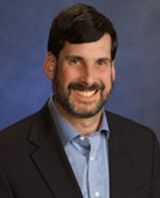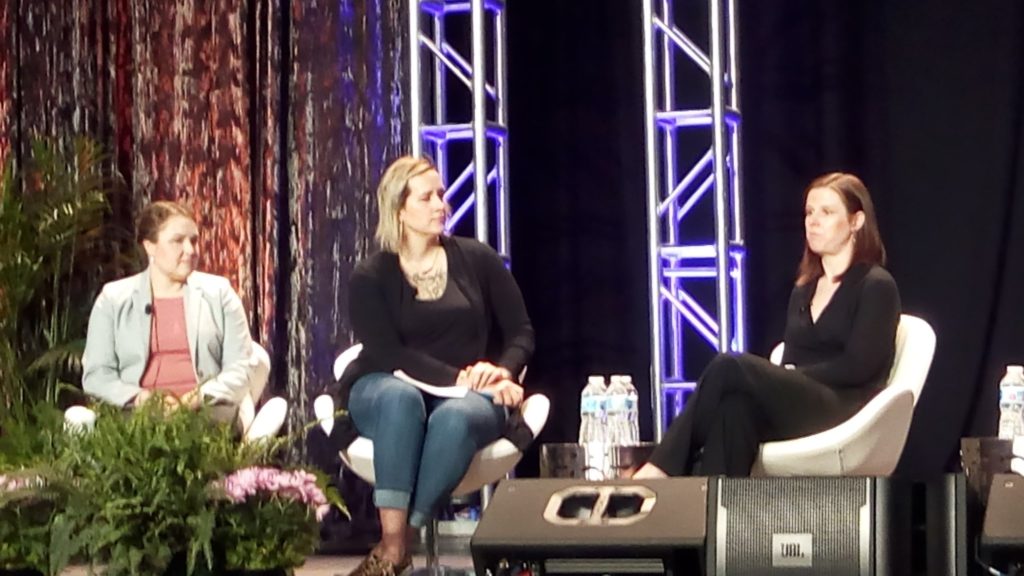
By MICHAEL L. MILLENSON
Three government experts on a health tech conference panel discuss the urgency of releasing actionable data; all are women. A more senior official, another woman, gives a TED-style talk making the same case. And a four-person, private-sector panel debates privacy and ethics; three of the four are female.
Health Datapalooza, a conference begun with government sponsorship a decade ago, proclaims its goal as “data liberación” – freeing health data from deep within federal agencies and giving it to patients and entrepreneurs. But in 2019, women’s “liberación” seems to have become an unspoken sub-theme.
Interestingly, while women’s status in tech was the focus of a plenary panel on diversity and inclusion, the panelists seemed oblivious to the robust participation of women in their own meeting.
To put some data behind my subjective impressions, I went back and examined the list of speakers, who came from a wide range of organizations and included individual patient activists. I counted 89 men and 99 women. Liberación, indeed.
(Why did the feds adopt a Che Guevera-thowback rallying cry? No idea.)
There are many barriers to women in tech, including overt sexism and covert cultural clues discouraging girls from entering the field. The end result is that women hold less than 20 percent of U.S. computer science jobs. But why, exactly, did the experts at this conference with XX chromosomes outnumber the XYs?
Because the meeting was organized by AcademyHealth, the society of health services researchers, I’ll begin with a disclaimer. I did not compare male vs. female job titles, plenary vs. breakout session participation, speaker age or any other variables which would send a frisson of excitement through PhDs. On the other hand, I’m not publishing my peer-reviewed results three years later, either.
On reflection, I think there are two intertwining explanations.
The first is that Datapalooza, though celebrating the clinical and economic potential of digital health data, doesn’t emerge from the same mold as Silicon Valley tech gatherings or HIMSS. The conference began in 2010 as the Health Data Initiative Forum. Despite a name change in 2012 and a dramatic increase in attendance, the participation of private sector start-ups, venture capitalists and other hard-core tech types has ebbed and flowed.
While this year’s conference included a modest number of entrepreneurs among attendees, speakers and exhibitors, it tilted towards public sector and policy types, albeit some who had entrepreneurial experience. This bias could be seen even among techies. For example, speaker Charles Jaffe has a technical background at Intel and SAIC, but he’s also an MD-PhD who heads Health Level 7, a standards organization. Similarly, while speaker Jutta Williams holds a master’s from one of the top computing science schools in America, her work at Google on artificial intelligence focuses on standards.
The conference also deliberately included innovative public-sector organizations; e.g., Marin County’s novel use of data on social determinants of health to improve care and reduce costs for the homeless and those with complex medical needs. Though that program has a private start-up as a partner, it would be relegated to a distant meeting room at most tech conferences. Those tend to focus more on corporate product roll-outs or opportunities for early-stage investors to do well (very well). “Doing good” finishes a distant second.
The government-data-used-to-do-good focus expands the potential expert roster to include those who work for government, formerly worked for government, try to influence or respond to government or research government actions. That, in turn, improves the odds of female participation. While 11 percent of senior exec positions at tech firms are held by women, they comprise roughly 35 percent of those serving in the federal government senior executive service. Women are also well represented among researchers, policy groups, health care attorneys, etc.

At this meeting, participants in the first panel mentioned above included Alexandra Mugge, deputy chief health informatics officer for the Centers for Medicare & Medicaid Services (CMS), with a master’s in public health; Allison Oelschlaeger, CMS acting chief data officer, specializing in data analytics; and Shannon Sartin, executive director of the U.S. Digital Service for the Department of Health and Human Services (HHS) and a veteran of tech companies.
I doubt you’d find a similar group of women with that kind of policy clout in the Defense Department.
Indeed, health tech policy clout may be the most under-recognized element of women’s influence. Men may dominate health tech in Silicon Valley, and they likely constitute the majority of tech experts even within government. But in terms of power and influence, there’s much more gender balance than is obvious.
Just ask CMS Administrator Seema Verma, who oversees $ 650 billion of health care spending a year at the largest purchaser of health care services on the planet.
Michael L. Millenson is president of Health Quality Advisors LLC and adjunct associate professor of medicine at Northwestern University Feinberg School of Medicine.

